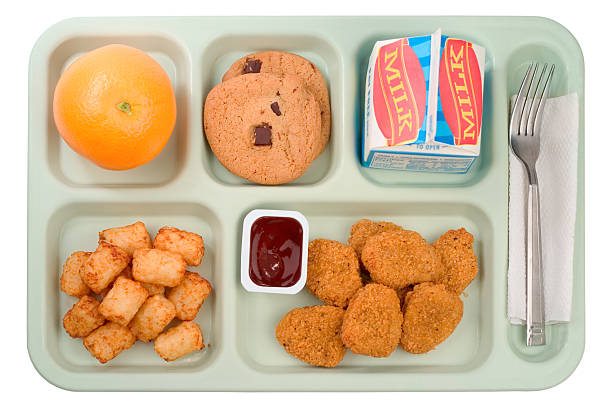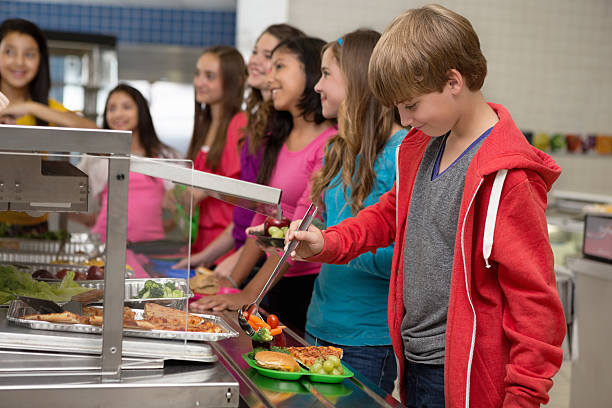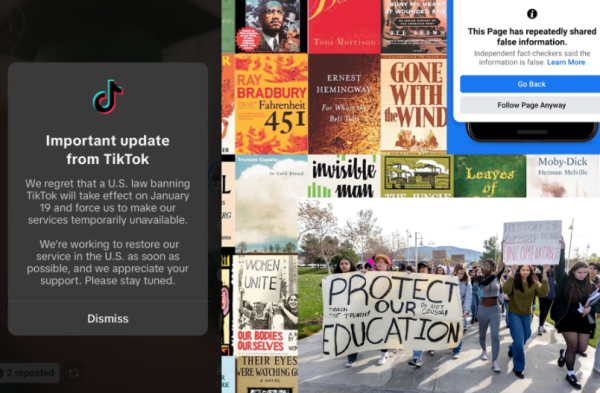Food Quality in Schools
Is America meeting the nutritional and quality standards for students’ lunches, or are they barely making the mark?
Middle school students choosing healthy food in cafeteria lunch line
STOCKTON: Each time you hear that lunch bell ring, you run to the cafeteria looking forward to what there is to offer. Favorites like chicken sandwiches, pizza, alongside chips are the first to go. However, when did hamburgers and chips become nutritious enough for students to eat? Looking at California’s public school food menu, the main entrees consist of many meals we deem as junk food or fast food. Pizza, nachos, chicken nuggets, mac and cheese, the list goes on. The sides aren’t much better with chips and cookies, with the actually nutritious things such as fruits and vegetables can often be seen in the garbage. Michelle Obama’s national school lunch program in 2011 did help sharpen up the mess that had been America’s previous school lunches, and

created what is now known as “MyPlate” which standardized portions for students’ nutrition. However these standards are barely being met, and meeting the requirement of having a protein being necessary for lunch does not mean that it is actually quality. An example as such would be taco sticks, which are a very processed, heavy food. This lack in quality of food is a contributing factor towards childhood obesity. When allowing pizza and burgers for a child’s daily lunch, they eventually accept that these are okay foods for everyday consumption.
If we take a look at other countries’ school lunches we can see much more variety and much more importantly quality. Instead of separate packaged meals, we see whole foods that resemble actual meals. Let’s look at France, for example, where lunch is considered quite an important meal of the day, veggies and meat such as chicken are the main staples with cheese and bread as the sides. Their beverage for choice is…… WATER! Water is so important in one’s life, however milk is used for American school lunches despite many people being lactose intolerant. With this balanced meal it is no wonder that France has a 17 percent obesity rate compared to America’s 40%. To help the younger generation lead a better lifestyle, implementing less processed foods and more whole foods into school lunches will lead to better futures overall.







